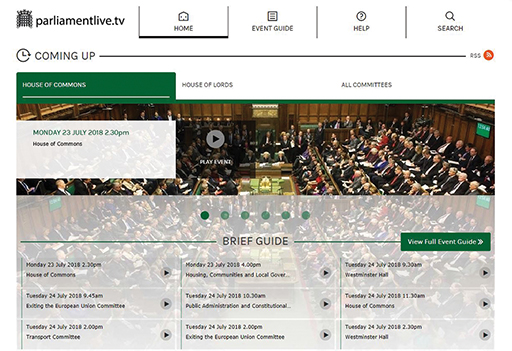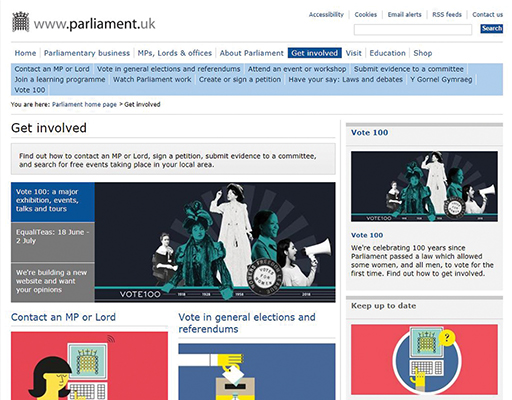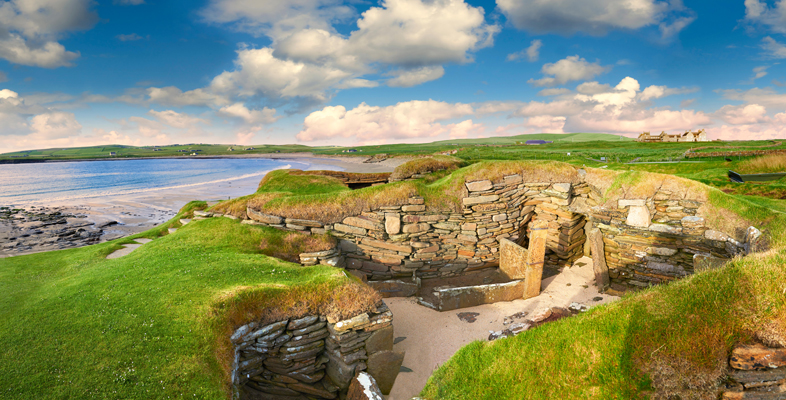2 Making a contribution to the UK Parliament
Like the Scottish Parliament, the UK Parliament also has a long and turbulent history. The Palace of Westminster which now houses the UK Parliament emerged from what was the Royal Palace of Westminster. The buildings have changed as result of fire (in the Great Fire of 1834), war and rebellion, and it is listed as a UNESCO World Heritage Site.
Westminster Hall forms part of buildings which together make up the Palace of Westminster. It has played a central role in both English and UK-wide history. Originally, Westminster Hall was part of a royal palace around which the major institutions of state developed (law courts, administrative offices, church and executive). In Westminster Hall, state trials were held. The most well-known of these is the trial of Charles I of England and Scotland. Like that of the Scottish Parliament, the architecture of the Palace of Westminster is instantly recognisable.

The UK Parliament has gone through several transitions; following union with Wales and then union with Scotland, it became the Parliament of Great Britain, and following union with Ireland it became the UK Parliament. In the past it was commonly referred to as Westminster Parliament but since devolution, it is more commonly referred to as the UK Parliament.
Like the Scottish Parliament, the UK Parliament encourages participation in lawmaking. As with the Scottish Parliament an individual can participate by:
- writing to a parliamentary committee
- using the media or social media to generate public interest in the issue and pressure parliament to make changes to the law
- writing to an MP on a particular issue
- lobbying an MP to make an amendment to a Bill.
Individuals can also consider:
- standing for elections as an MP (they need to be over 21 and could stand as an independent candidate or as a candidate for a political party)
- taking part in online debates using the discussion forums on the UK Parliament website
- registering as a potential adviser to a committee where they have specialist knowledge
- submitting a Petition to the parliament asking for the introduction of a new law or change to an existing one (or that they look into a matter of public interest or concern)
- attending a committee event
- responding to a consultation
- applying for a job at the parliament or undertake work for an MP
- watching live debates on parliamentary TV and follow social media.

Now attempt Activity 2 which encourages you to explore the getting involved section of the UK parliament website.
Activity 2 The UK Parliament: Becoming involved
Then explore the ‘Get involved’ section of the UK Parliament website https://www.parliament.uk/ get-involved/ [Tip: hold Ctrl and click a link to open it in a new tab. (Hide tip)] . It is set out differently from the website of the Scottish Parliament. In particular look to see:
- how you can have a say in debates and consultations
- the process for submitting a petition to the parliament.

Comment
As with the Scottish Parliament website, the ‘Get involved’ section of the UK Parliament website is set out into different sections to assist navigation and enables individuals to learn about how they can become involved.
- There is a section ‘Have your say: Laws and debates’. This provides information on how to follow the progress of current legislation and how individuals can input your view where Bills affect you, about contacting a member of the House of Lords, your MP and submitting evidence to a Public Bill Committee. There is also an opportunity to participate in digital debates and to object to a private Bill which directly affects you.
- A new e-petitions website was opened in 2015 and if an e-petition gains 100,000 votes it will be debated in the House of Commons (the directly elected chamber). Details of e-petitions can be found at https://petition.parliament.uk/ and a video explanation of how to start or sign an e-petition can be found at https://www.parliament.uk/ get-involved/ sign-a-petition/ .
You will have noted that the processes and opportunities to get involved differ from those of the Scottish Parliament. The UK Parliament legislates on reserved matters in relation to Scotland and has different legislative procedures. This has an impact on how individuals can become involved.
In the ‘Get involved’ section of the website, you can sign up for a regular newsletter. You may also like to explore the ‘Get involved’ video which explains how you can become involved in the work of the UK Parliament. There is also an extensive education section and a section in which you can find out more about MPs, members of the House of Lords and lobbying the UK Parliament.
